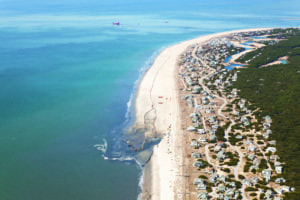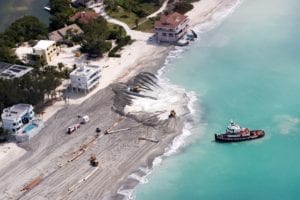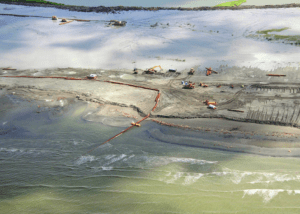A primary goal of dredging is to create and maintain safe and efficient navigation channels and the excavated soil, the dredged material, is often used for environmentally beneficial purposes, including the creation of fish and wildlife habitats.

In every port city up and down the U.S. coastlines, the dredging industry is keeping our nation’s trading gateways open for business. Together, these ports handle 95% of America’s foreign trade.
The Port of Oakland, one of the largest general cargo ports in the United States, lost market share over the last decade due to navigation channels that were unable to accommodate the world’s largest container ships. After many stops and starts, a project to improve the port’s shipping lanes has been brought to fruition. With deeper channels, the port’s expansion generated 4,100 new jobs, $500 million in annual business revenue, and $15 million in new state and local taxes. In addition to fulfilling the need for a productive port industry to keep U.S. products competitive, our seaports are responsible for generating nearly $4.6 trillion in total economic activity and seaport cargo activity supports the employment of more than 23 million U.S. jobs.
Dredging in America
The cost of most products that American businesses and consumers rely on would increase without the consistent maintenance of our Nation’s inland and coastal waterways, as the towing and barge industry provides the most cost-effective mode of transporting freight. In each of the 41 states served by our inland waterways, maintenance dredging is essential. Without periodic dredging, the cost advantage provided by water transportation would be lost.
Throughout the year, dredging contractors work to ensure the safe and secure transportation of agricultural and forest products and of strategic chemical and energy resources in bulk. As a byproduct of dredging, sand is reclaimed for low-cost aggregate and fill material. This aggregate is used to construct and maintain roads, to rebuild levees, or for other public purposes.
Beaches and dunes are coastal communities’ first line of defense against coastal hazards and rising seas. As “green” or natural infrastructure, beaches and dunes also provide for a coastal habitat, recreational opportunities and a stronger coastal economy. Erosion caused by hurricanes, tropical storms, sea level rise, other natural processes, as well as haphazard development and poor coastal management, can however leave communities vulnerable and lead to human and economic tragedy when disaster strikes.
Dredging restores these natural barriers that protect shoreline property from disappearing into the ocean. Periodic nourishment to maintain beaches and dunes has proven to be the most effective remedy for preserving our protective coastal systems. During Hurricane Sandy communities that had invested in maintaining wide beaches and high, healthy dunes suffered far less flooding and property damage than neighboring communities that had neglected their coastline. The dredging industry works with state and local governments, the U.S. Army Corps of Engineers, and other federal agencies to protect and restore shorelines on all our nation’s coasts by planning and implementing beach nourishment and replenishment projects.

Beaches are of course more than just a protective barrier. They are one of America’s favorite vacation destinations. Through travel and tourism beaches help generate $225 billion for the national economy and contribute $25 billion in federal tax revenue. American beaches are a popular attraction for tourists from around the world, contributing to the country’s $26 billion trade surplus in tourism. With more than 50% of the U.S. population within an hour’s drive of the seashore, beaches are an affordable vacation option for most Americans, but maintaining this economic resource often requires beach nourishment.

Beaches and dunes are not the only part of the coastline that provides storm protection and wildlife habitat. Wetlands and marshes are an important and fragile part of the coastal environment that also significantly reduce storm surge. Approximately 40% of our nation’s wetlands are found in the state of Louisiana, constituting one of the world’s most productive ecosystems and the barrier between New Orleans and the Gulf of Mexico. Unfortunately, Louisiana is losing wetlands so fast that an area of land the size of the District of Columbia vanishes each year. Over the last 50 years, Louisiana’s land loss has made up 80% of wetland loss in the United States.
“The Louisiana shoreline loses approximately a football field (100 yards) of land every hour, and we’re fighting to preserve this coastline.”
With the help of legislation such as the Coastal Wetlands Planning, Protection, and Restoration Act of 1990 and the RESTORE Act in 2012, states including Louisiana are fighting to save these precious resources. The dredging industry is playing a leading role in many of these environmental restoration projects.
As wetlands disappear, so do many wildlife species that are an integral part of our natural heritage. In other parts of the country, such as the Chesapeake Bay, Southern California, Puget Sound and the Texas coast, the restoration of wetland environments is often a side benefit of other, mostly navigation-related, dredging projects.




